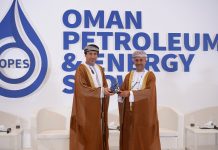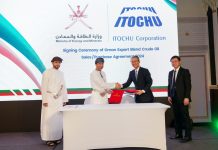An additional $64bn In-Country Value (ICV) generation opportunities have been identified in the recently unveiled blueprint strategy for the ICV development in Oman’s oil and gas industry. Akshay Bhatnagar reports
Over $100-110bn investments are expected to take place in the oil and gas industry in Oman from 2013 to 2022. And these investments are expected to lead towards additional In-Country Value (ICV) opportunities of $64bn from 2013 to 2020. This was revealed in a recently held seminar where the ‘ICV Development Blueprint Strategy’ for the oil and gas sector was unveiled and discussed.
For the uninitiated, ICV is the total spend retained in country that can benefit business development, contribute to human capability development and stimulate productivity in the Omani economy. In short, products made and services provided by skilled Omanis. The ICV strategy has been developed based on a study done by the ICV Committee under the aegis of Ministry of Oil and Gas. The committee comprises the Oman Society for Petroleum Services (OPAL) and major oil and gas companies in the Sultanate. The study and strategy development focused on two areas – goods and services, and workforce – were done in consultation with Accenture.
The additional ICV opportunity of $64bn includes enhancement and expansion of the oil and gas companies’ direct sourcing and employment of Omanis; localisation of contractors and suppliers sourcing (goods and services) and; development of contractors and suppliers’ work force. The strategy is aimed at utilising the ICV opportunity progressively through a collaborative and coordinated ICV development programme broken down into specific initiatives involving the contribution of all relevant stakeholders.
Presenting the key findings of the study and major strategy recommendations, Irshad Al-Lawati, CEO of OPAL informed that currently over 80 per cent of the direct sourcing (expenditure) of the oil and gas companies is done through local contractors, agents and suppliers. This high percentage has been achieved due to the increased focus of the sector on ICV which has led to an increase in the employment of Omani nationals and demand for products/solutions from the Omani contractors and suppliers.
The strategy has identified 53 initial supply chain development opportunities in the oil and gas industry for a higher ICV generation. They include creation, expansion or enhancement of industries, products or activities requiring development of raw material, manufacturing, assembly, blending and fabrication. For example, the industry’s estimated requirement during 2013-2020 for carbon steel pipes is worth $2.85-3.15bn approximately. This could be met by promoting local manufacturing units which would also boost job opportunities. Similarly, the insulation material’s estimated requirement in the same period is valued $538-595mn approximately. Local manufacturers could get business around $187-210mn from it and it would also generate additional 190-210 jobs. These opportunities are not restricted to small and medium entrepreneurs (SMEs) alone. They could also be leveraged by entrepreneurs, established companies and foreign direct investments (FDI).
Apart from goods and services, the second focus area for the blueprint strategy is to develop the specialised workforce for the short-term as well as the long-term. According to the study, the oil and gas industry currently employs 55,000 people out of which 22,369 are Omanis (an Omanization rate of 40.6 per cent). The direct workforce of the oil and gas companies is currently 8,991 with an Omanisation rate of 63 per cent. In the service providers’ workforce, the Omanisation rate is pegged at 59 per cent. The construction sector which contributes the highest number of jobs within the oil and gas industry has a comparatively low Omanisation rate of 25 per cent. Overall, the service providers and construction sector constitute 82 per cent of the jobs in the oil and gas industry.
By 2020, the oil and gas industry’s estimated total manpower requirement will be 72,704. To leverage the enhanced job opportunities, the strategy envisages an education and training programme for 36,020 Omanis to take up mainly semi-skilled and medium-to-high end positions in the industry.
Talking at the event, Raoul Restucci, managing director, Petroleum Development Oman (PDO) said, “The plan is to encourage local firms, local developments. It is about attracting international investments that have local ambition. It is about developing a sustainable roadmap for long lasting economic development. This actually is achievable. The industry needs to adopt the necessary step change and mindset. The default position should be Omani first. And if we can’t do it, then we need to ask ourselves – what are the key steps to ensure we can build and deliver Omani solutions?”
Alexandre Oliveira, E&Y global oil and gas emerging markets leader, applauded the blueprint strategy as he said that Oman’s ICV approach is driven by a clear structured programme leveraging best practices and industry learnings. But he cautioned that the local content needs to strike a balance between benefitting the local population without deterring the international investors. He also advocated for doling out incentives to encourage full participation from the relevant stakeholders.
The oil and gas industry has done a commendable job in achieving a high degree of ICV generation so far and developing a promising and exhaustive blueprint strategy for ICV development for the next seven years. The real test lies in its implementation as the task is quite challenging and daunting but as Restucci said ‘it is achievable’ and the ICV committee has also promised to regularly review the key performance indicators (KPIs) through a monitoring mechanism. The other key sectors of the economy must be looking at this with great attention. Its initial success in the oil and gas industry is bound to spur interest among them to adopt the learnings to create a multiplier effect.
To report this post you need to login first.






